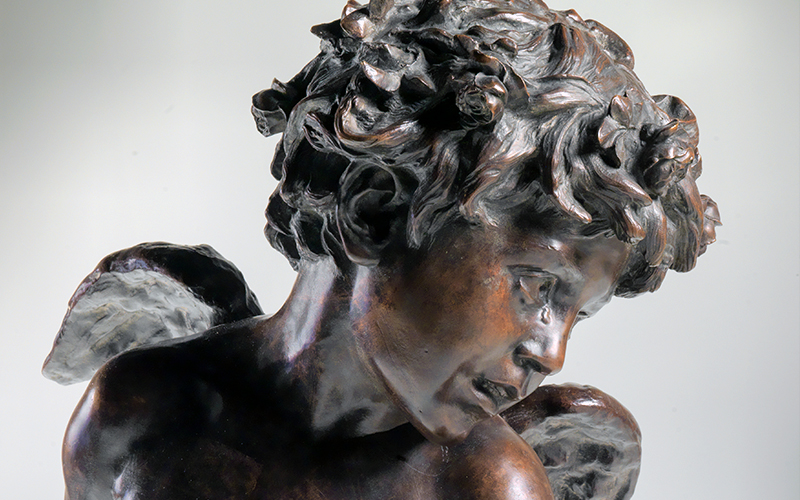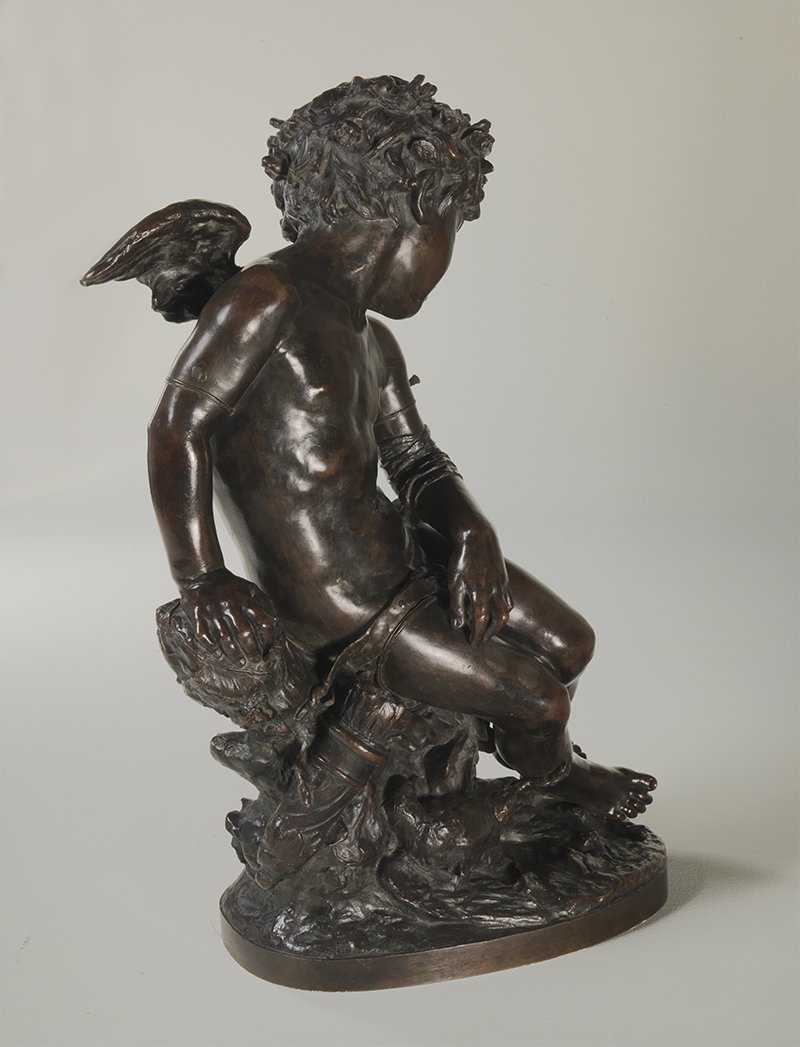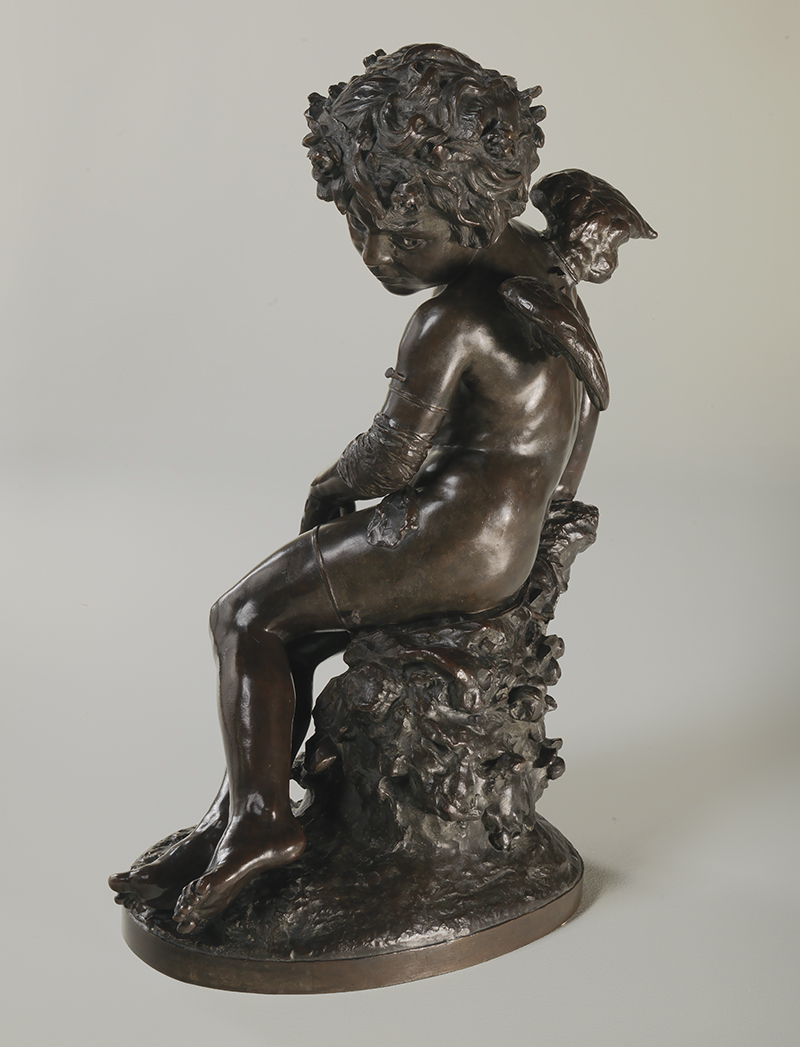Charles Carpeaux

Son of the famous French sculptor Jean-Baptiste Carpeaux, Charles Carpeaux (1870–1904) became familiar with the art of sculpture from an early age, posing regularly for his father, both on his own and together with his mother.
Although Jean-Baptiste died when his son was only five years old, some of his most famous works are portraits of Charles. One of the most interesting works by the sculptor acquired by Calouste Gulbenkian was Wounded Cupid. One day, when Charles injured his arm, his mother consoled him by giving him a dove. This incident inspired Carpeaux, who would have made the child, at the time about three years old, pose for several sessions. Another inspiration could have been a painting with the same title by his contemporary William Bouguereau.


Charles played an important role in the appreciation of his father’s work, putting together a monograph about his career, entitled La Galerie Carpeaux. At the same time, he worked as an assistant at the Indochinese Museum of the Trocadéro Palace, in Paris. Archaeology became a great passion of his and Charles travelled to Asia on several expeditions through Cambodia and Vietnam, where he carried out scientific work and photographed the ruins of Mỹ Sơn sanctuary and the Bayon temple, among other archaeological sites. His memoirs were published posthumously by his mother, Amélie Carpeaux.
While the excavations he worked on led to incredible discoveries, such as temples and artefacts, the conditions were difficult and Charles and his colleagues were exposed to extreme temperatures and a lack of adequate hygiene. Several people became sick, including Carpeaux, who eventually died at only 34 years old, without returning to France.
Many originals of his photographs are currently held in the Guimet Museum. In 2005, about 100 years after his death, the museum organised an exhibition about the treasures of Vietnam, restoring and digitalising Charles’ photographs and displaying them to the public.
In memory of her son, Amélie gave the original model of Wounded Cupid to the Ny Glyptotek Carlsberg, in Copenhagen, whose collection also includes a marble version. In 2018, the two works were presented alongside the bronze edition belonging to the Gulbenkian Collection in the exhibition: Pose and Variations. Sculpture in Paris in the age of Rodin.
A Collection of Stories
On a weekly basis, we shared a story around Calouste Gulbenkian’s collection. This section was created in 2020, which is why the articles refer to the Calouste Gulbenkian Museum collection as the Founder’s Collection.
Other stories